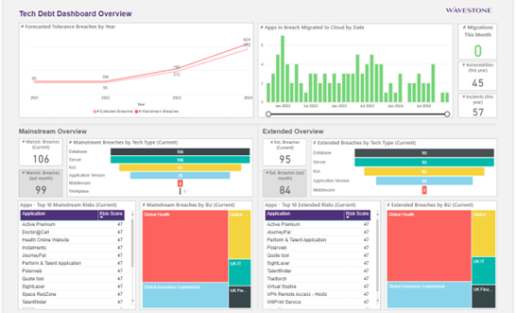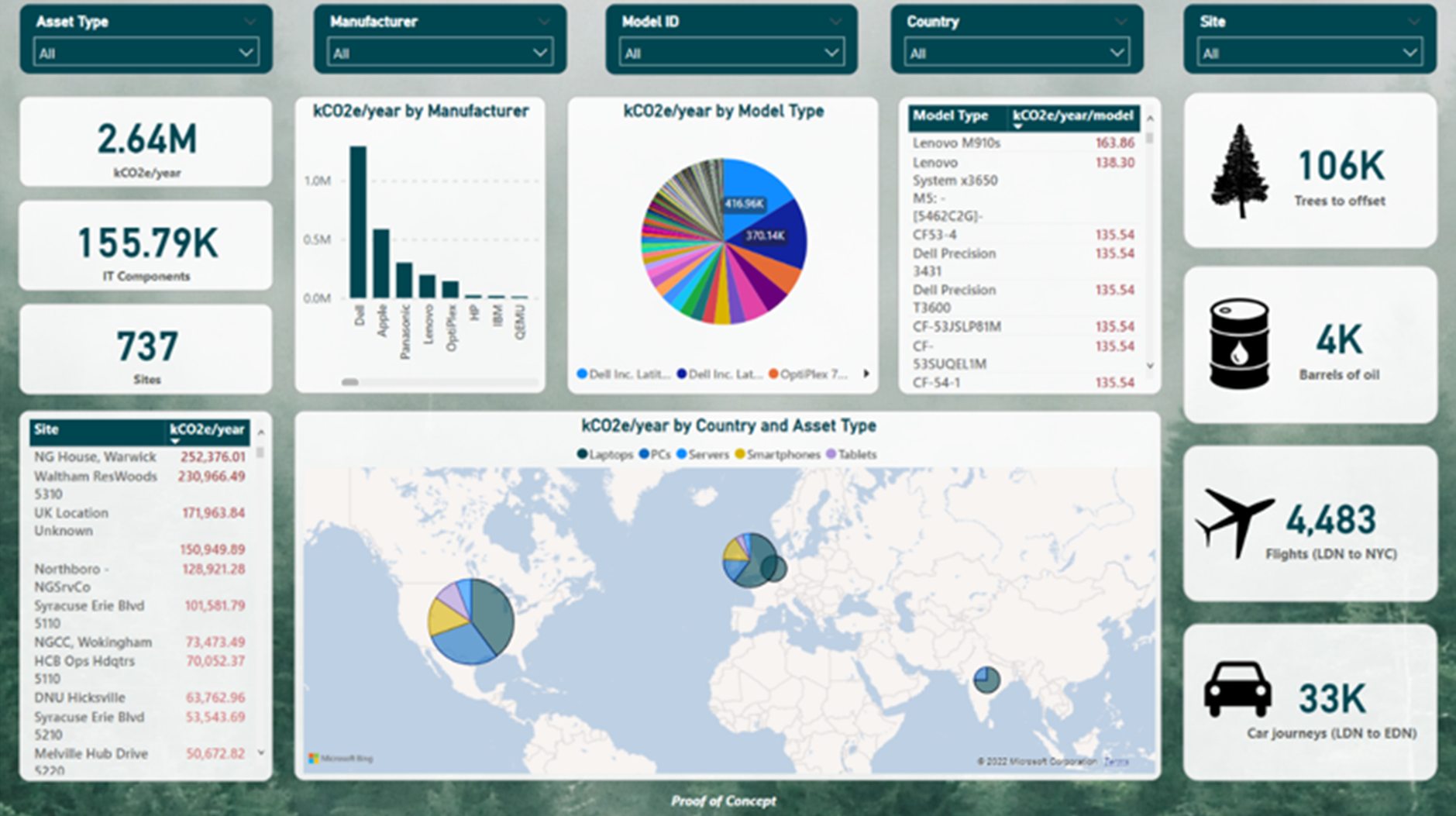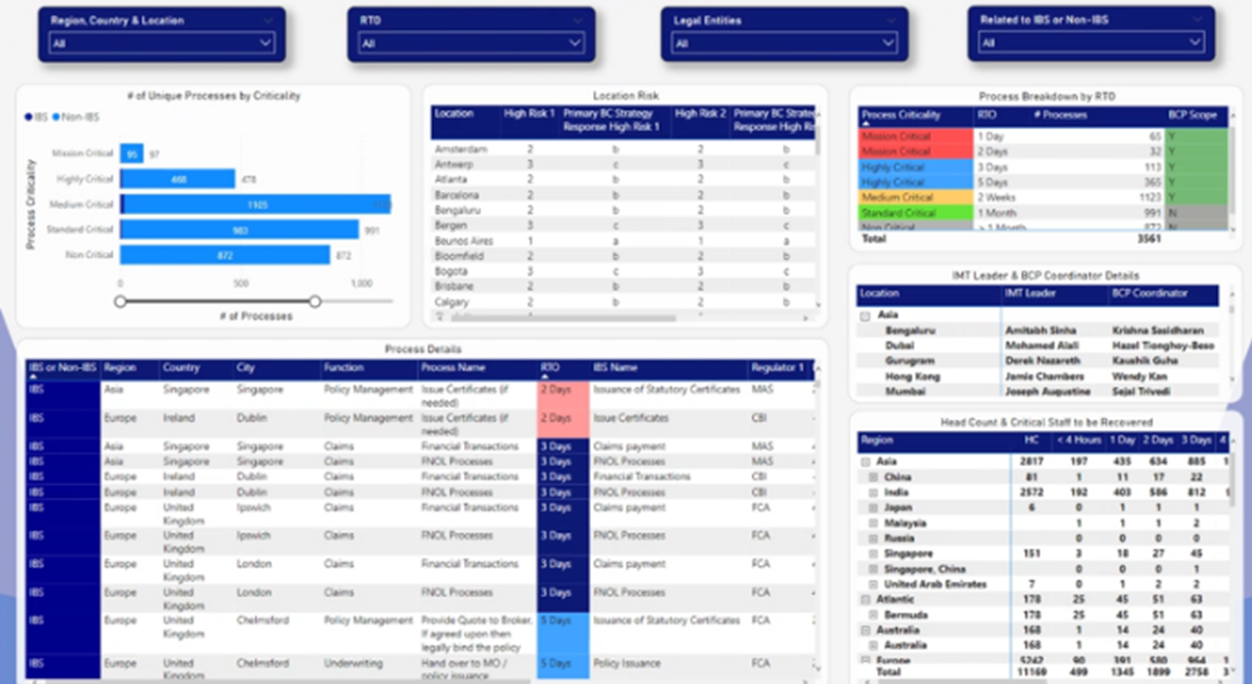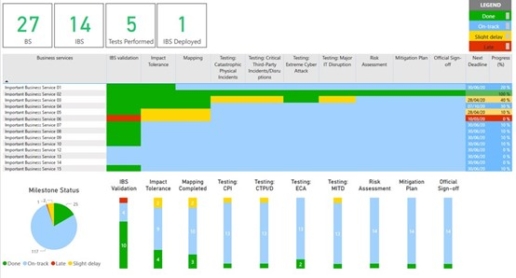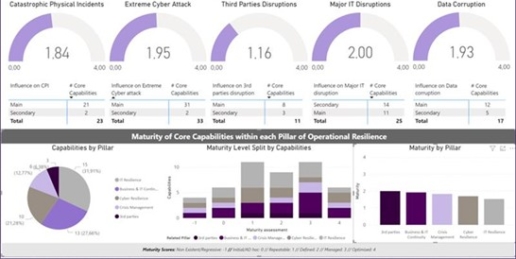Harnessing the power of data
In today’s data-driven world, businesses are constantly seeking ways to gain a competitive edge. The sheer volume and complexity of available data can be overwhelming, but with the right tools and strategies, data proves to be a crucial component of making informed business decisions. By harnessing the power of data, organisations can gain insights into customer behaviour, market trends, operational efficiency, but also uncover patterns and mitigate risks while optimising performance.
How can dashboards drive decision making?
Reporting tools can lay the foundation for organisations to make proactive and informed decisions through the development of interactive dashboards. These reporting tools provide visibility into key KRIs and KPIs that reflect the most up-to-date risk position of the organisation, contributing to shaping business strategies with the aim of improving performance.
Typical challenges often faced by our clients include incident, crisis management, recovery planning capabilities, assessment of operational risk of different business units as well as management of technical debt caused by legacy technologies. If such risks are not mitigated efficiently, they can lead to business disruption and systems failure.
Centralised dashboards can help to mitigate these challenges. We typically leverage PowerBI to create the dashboards, as it enables a unified solution for anything related to an organisation’s business services regarding continuity, resilience, a clear overview of their IT estate, risk posture and provide a forecast of future technical debt issues for proactive management.
How to implement effective dashboards
Creating an easily customisable dashboard to accommodate different stakeholder group needs is key to improve decision-making in large, usually complex, and siloed organisations. Before the data modelling and dashboard design stage, a scoping and discovery exercise usually needs to be undertaken so that business requirements are understood and key parameters such as the target audience of the dashboard, the data sources to be used and the dashboard refresh cadence are defined. These steps will ensure that the dashboard is relevant to the business strategy and remains tailored to the business needs.
Data Governance is key
One of the biggest challenges we encounter while building a dashboard is data accuracy and data integrity issues which is often result from poor data management practices. We often see data fragmentation due to the lack of clear ownership and accountability around data maintenance.
We guide our clients to establish good data governance and management practices that will instil a broader confidence in data and ensure that centralised data sources are kept up to date according to industry best practices. This is a fundamental first step in ensuring that the dashboard will be maintained and refreshed efficiently contributing to informed management decisions.
Why PowerBi is the future of dashboards
Now the data governance is in place, it’s time to create the dashboard. We use PowerBI to create high-quality, automated, and interactive dashboards that provide a comprehensive overview of organisational functions, owners, and stakeholders. This replaces traditional reporting methods and improve data quality while promoting accountability among business functions. Such examples of impactful dashboards include a one-stop solution to unify Business Continuity and Operational Resilience (link to client story) but also prioritisation of remediation efforts and visualisation of technical debt (more details can be found here). Senior executives have used our dashboards to plan for incident and crisis management as well as recovery planning for business services and for obtaining a better view on obsolescence risk and potential impact to their business. Upon creation of the dashboards, we hold workshops with the client stakeholders to ensure full buy-in and that users understand and can easily maintain, refresh, and navigate the dashboard. In doing so, Wavestone lays the foundations towards more effective risk management and strategy.
Here’s a selection of our top PowerBi Dashboards:
Example Dashboard: Technical Debt
This dashboard will effectively monitor and address tech debt, enabling informed decision-making, risk reduction, and efficient resource allocation. This allows an organisation to stay proactive when managing technical debt, enabling optimization of system performance, enhancing security, and driving long-term stability and giving a comprehensive view of Technical Debt management insights for an organisation.
Example Dashboard: Sustainable IT
This powerful dashboard offers a comprehensive view of your organization’s environmental impact by providing key metrics on CO2 emissions. This enables organisations to identify areas for improvement and make data-driven decisions to reduce carbon footprint, as well as showcasing the positive environmental impact of their sustainability initiatives.
Example Dashboards : Business Continuity and Operational Resilience + Operational Resilience Deployment – IBS Activities
These dynamic dashboards provide a comprehensive overview of your organization’s operational resilience activities, empowering you to effectively manage important business services, track progress across various critical areas and visualize progress for each service.
Example Dashboard: Maturity of core capabilities to respond to threats
This comprehensive dashboard dives deeper into an organization’s operational resilience with a focus on strengthening cyber defences. Providing a detailed view of core capabilities across operational resilience pillars, this enables an organisation to assess and improve readiness to respond to cyber threats.
The results
With the right tools and strategies, organisations can harness the power of data to gain improved insights, optimise performance, and make more informed decisions across multiple operational functions. Wavestone’s expertise in leveraging data through well-designed dashboards has transformed the way our clients approach risk management and strategy, enabling a shift from reactive to proactive decision making.
In particular, technical debt dashboards have increased visibility of the obsolescence profile in various business units, as well as provided forward looking views to help proactively manage obsolescence in the IT estate before the risk crystalises. That results into timely resolution of audit points related to obsolescence, dynamic reporting to senior management teams, reduced costs affiliated with delayed technical debt remediation as well as decreased likelihood of unexpected operational disruption. In the Business Continuity and Operational Resilience space, dashboards that Wavestone created have assisted client organisations with prioritising and planning of their efforts for incident, crisis management and recovery planning per business service.
Here's what our clients have to say:

Head of Risk and Control - Multinational Insurance Firm
“Wavestone did an excellent job from stakeholder management as well as technical delivery perspective. The engagement involved working with a wide range of stakeholders, some of which can be challenging to manage expectations. Wavestone’s determined, professional style won them over and the work is held in high regard. We also closed the related audit action and submitted evidence to close the final action re technical debt management. I think very highly of Wavestone and would welcome the opportunity to work with them again.”
